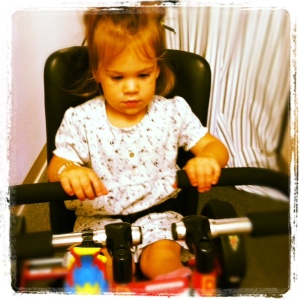At Starfish Therapies, we find that many of the children we work with have difficulty with motor planning for various reasons. You may have heard this term during your child’s therapy session. Hopefully this article will provide you with a better understanding of what this term means and why it is important.
Motor planning is the ability to process information various sensory systems including tactile, visual, proprioceptive (body awareness), auditory and vestibular and use that information to plan and execute motor skills. There are several different components and building blocks of motor planning. They include the following:
Imitation: This begins to occur early in the first year of life and continues through childhood. This is what is occuring when your baby mimics facial expressions, gestures, or sounds. This leads to ability to use these skills later in life.
Ideation: This is where children begin to come up with their own ideas about how things work based on their past experiences of imitation.
Initiation: Children who have motor planning difficulties often have to most difficult time with the initation component. You will know a child is initiating a task after you have practiced it several times with cuing for initiation and then you see them attempt it independently taking the correct first step.
Construction: Construction is when children explore with putting blocks or other objects in different ways to make something. It help builds the knowledge for organizing and using space.
Feedback: This is the information that children receive as they practice skills and make mistakes. Increased practice leads to increased feedback which leads to a more automatic completion of the skill over time.
Feed-forward: Feed-forward is what should occur after a skill is practiced and mastered. It allows anticipation of what will happen next and gives opportunities to fix errors before they occur. It explains why sometimes you are stepping on your brakes before your brain even registers that the car in front of you is stopping. This becomes a large role in the development of postural control.
Grading: This is the ability to modify the intensity of the skill based on the environment situation.
Timing and Sequencing: refers to the ability to perform motor skills in the correct order and at the correct time based on the situation. To master this, understanding of space, speed, and distance is required.
Children who have difficulty with motor planning may have or have had difficulty in some or all of the above components during their development. A child with motor planning difficulties may present with the following characteristics:
- clumsy or accident prone
- difficulty with simple motor tasks
- difficulty learning self care tasks
- may be passive and hesitant to initiate or attempt new tasks
- seem to have difficulty following directions
- may have speech-language deficits related to concept development
- difficulty playing with toys appropriately
- may seem defensive to tactile input
This is a broad overview of how motor planning is important part of development in many ways. Please let us know if you have specific questions regarding your child.

What are your references?
Comment by Fatemeh — January 27, 2017 @ 11:23 am |